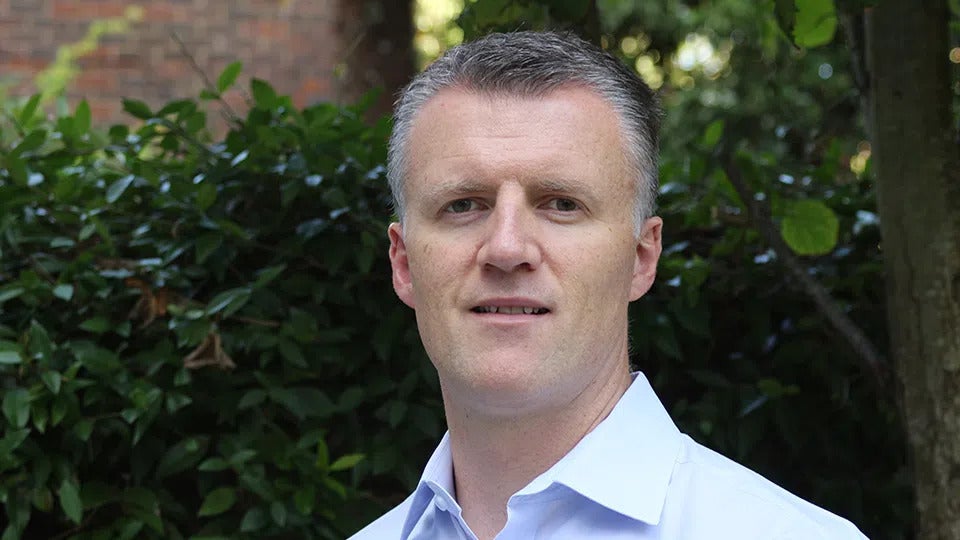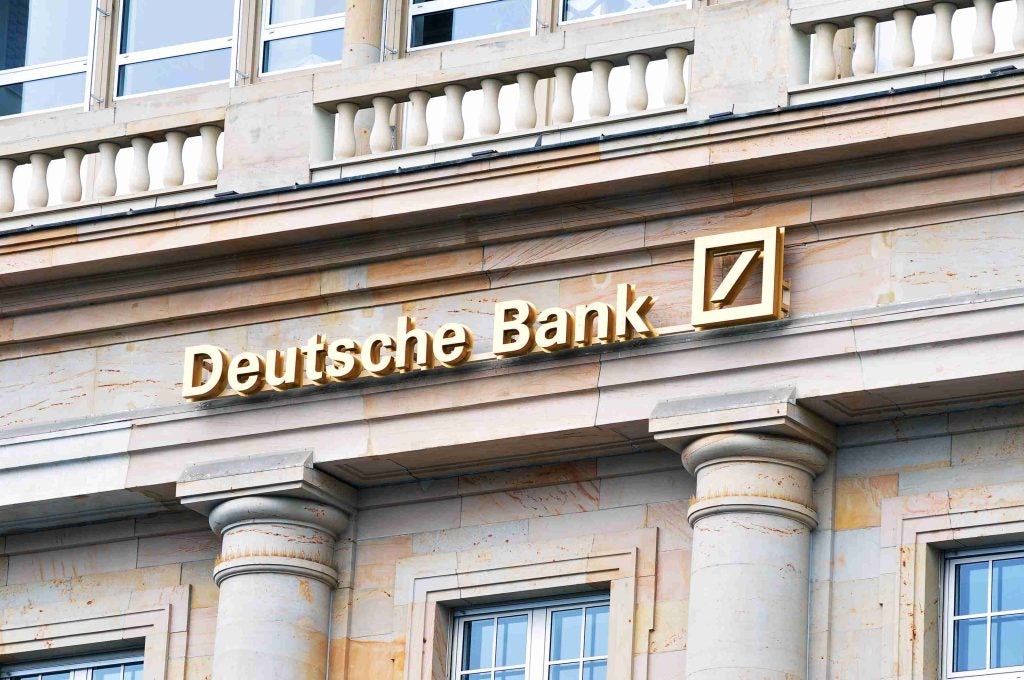
Private Banking Innovation: Evolution & Technology
For a traditional industry, private banking is changing faster than ever in 2023 with clients developing needs and technology evolving to meet them. What are the biggest changes going to be? And will the market see consolidation to deal with its growth of players? Patrick Brusnahan asks the industry
Noor Sweid, managing partner, Global Ventures

2023 will see increased M&A in the MENA region as a direct consequence of trends that have permeated 2022, and which will intensify next year. These trends are investors becoming more conservative, profit superseding the notion of growth at any cost, reduced liquidity and down rounds.
M&A activity will accelerate, and more exits will happen. This will transform the region’s ecosystem from fragmented – to stronger and consolidated.
Economic contagion from the rest of the world, will impact MENA more significantly in 2023. To date, the region has been relatively insulated, but for no longer. A clear path to profitable growth will be a must-have for corporates seeking capital.
Investment trends will continue to evolve rapidly. Globalization has produced many economic benefits, but its vulnerabilities and consequences have also been exposed. We see compelling momentum behind investment opportunities in resource efficiency: energy, water, food and supply chains, particularly in emerging markets.
Sean Farrell, investment director, Snowball

In the UK, latest ONS estimates indicate that UK GDP shrank by 0.2% in Q3 and the Bank of England is projecting that the UK economy may be in recession for 2 years. Globally, the IMF is projecting a significant slowdown with many advanced economies in recession or only slightly above zero growth, as more generalised inflation and the policy measures adopted to try to counter it bite. As investors and financial decision makers reckon with this reality, they might be tempted to streamline sustainability efforts, taking a view that these are a “nice to have” as opposed to a core part of an investing strategy.
How well do you really know your competitors?
Access the most comprehensive Company Profiles on the market, powered by GlobalData. Save hours of research. Gain competitive edge.

Thank you!
Your download email will arrive shortly
Not ready to buy yet? Download a free sample
We are confident about the unique quality of our Company Profiles. However, we want you to make the most beneficial decision for your business, so we offer a free sample that you can download by submitting the below form
By GlobalDataThis would be a mistake: recession and the energy crisis are an opportunity to fast-track, rather than decelerate sustainability efforts.
Whilst the risk/return trade-off looks unattractive for many traditional investments in an environment of negative or weak economic growth, stubborn inflation and higher interest rates, impact investments can deliver compelling returns through addressing long-term challenges and accelerating progress towards a more positive future for the planet and its people. Returns are typically less correlated with the risks affecting traditional asset classes and therefore can help to improve a portfolio’s diversification and stability.
Going forward, as markets begin to look past the current economic difficulties to the risks of stranded assets and disrupted or obsolete supply chains and business models arising from climate change, environmental degradation and social & political pressures, we anticipate that the risk premium for investments that are not “part of the solution” will rise and they will become increasingly harder to justify.
Going beyond ESG to investments which create positive impact
Noisy debate about the positives and negatives of ESG investing has dominated in the last twelve months and is likely to continue in 2023 particularly as a lot of anti-ESG rhetoric has become politicised. This debate is a distraction from the real question – which is how asset owners and asset managers can go further to create healthy financial returns and a positive impact on society. Discussions about ESG considerations in screening and evaluating the risk of investments are clearly important but they should be considered as an absolute minimum for financial decision makers – the starting point in developing new strategies, not the end goal.
Awareness of the value of integrating impact and financial goals in investing is at an all-time high and continues to gain traction within the financial system and with the end beneficiaries of financial assets. We anticipate that fully accounting for the social and environmental aspects of every investment, and aligning with and helping to drive positive impact along with financial returns will increasingly be viewed as the necessary next step beyond ESG investing.
Investment decisions today are being taken with incomplete information. For asset managers and asset owners, generating insightful impact data and using it well will be critical to investment performance, to growing their own businesses and to satisfying the demands of their end constituencies.
Greenwashing fears stall the conversation
COP27 has called for greater cross-regional standardisation with regards to ESG metrics. With new changes to. 2023 is going to see more urgent calls for internationally-recognised frameworks and standards that maximise transparency and minimise opportunities for impact- or green-washing, including for example the FCA Sustainability Disclosure Regime and investment labels in the UK.
Improved standards alone, however, will not be sufficient – investors will need to improve their own knowledge and critically evaluate their asset managers and underlying investments to determine which are truly contributing positive impact versus cherry-picking favourable metrics after the fact.
To be fair to asset managers (and allocators), many are on a journey and have to start somewhere, but the difference between those who leading from the front versus those taking rear guard actions because they feel forced to is likely to reflect itself in portfolios less exposed to the looming risks of the future and better able to deliver returns from being “part of the solution”.
Redressing unmet promises
Just before COP27, the latest United Nations Emissions Gap 2022 report stated that the current pledges made by the international community resulted in “no credible pathway” to restricting global warming to a 1.5⁰C limit and made an appeal for an urgent system-wide transformation to “avoid climate disaster”. In addition to international agreements and policy actions, impact investing will need to play an increasingly important role in effecting a green and just transition, enabling and financing the climate innovations and adaptations necessary to avoid and mitigate the worst-case outcomes.
Loss and damage was officially added to the agenda for the first time at COP27. This African COP has unleashed a new level of debate about how those with the greatest resources can collaborate with those who are less able to mitigate the near-term effects of the climate crisis, directing resources to where they can have the best payoff for us all, and recognising that our economies and ecosystems are inherently interrelated and that international progress will be held back by unfair distribution of costs and benefits. Whilst this is an important development, it should not delay or become a distraction to taking urgent action now and pursuing investments that contribute positively and where delivering attractive returns will help to show the way and attract further capital.
As the dust settles on promises made in this year’s conference, there is no doubt that 2023 will be a critical opportunity for private-sector investment to play its role in financing and driving progress in the global effort to mitigate and adapt to climate change.
Transparency and accountability offer a way forward
In scaling up finance for social and climate challenges, investors need tangible and meaningful measures to help mitigate against impact-washing and to evaluate where they can find the greatest “bang for the buck”. There is a key question investors can ask asset managers: when it comes to impact, do you mark your own homework?
As we move through 2023 we expect to see increased numbers of asset managers undertaking independent verification of their impact processes. We believe that “warts and all” transparency is important to allow investors to look under the bonnet and decide for themselves, and signals a commitment from investment managers to continuous improvement and open-mindedness, which usually aligns with superior long-term performance. In our own investment portfolio, we are looking for managers who will take the additional step of sharing these independent review findings publicly, demonstrating their commitment to transparency and honesty, and giving themselves a strategic advantage through accelerating their progress in a field which is evolving rapidly.
Alexandre Duret, product director, wealth management, Temenos

We are in the midst of the greatest generational transfer of wealth in history. Over the next decades, trillions of dollars will be passed from the Baby Boomer generation to Gen-Xers (born between 1965-80) and Millennials (1981-96).
This younger cohort represents an opportunity (a must) for banks to expand their wealth management client base. But this is a very different customer to the High New Worth Individuals (HNWI) that banks are familiar with. They tend to be more socially and environmentally conscious. They expect digital services that are highly personalised and deliver convenience, and see no reason why wealth management should be any different. They are interested in new asset classes, such as cryptocurrencies, exchange traded funds, and investing in early-stage businesses.
What has worked for banks in the past won’t work in the future. This new cohort needs a different type of wealth management product and experience; always accessible, hyper-personal, informed and transparent. A blaze of new fintechs are already striving to give them what they want. The wealth management platform market, a proxy measure of fintech growth in this sector, is expected to be worth just over $9 billion by 2028, at a CAGR of 13.8%.
This is not news. But as the stakes rise and urgency becomes a necessity, banks risk myopia. In the race to win the wallets of younger clients, they must also keep a focus on the clients they have.
The new with the old
Generational wealth transfer will not be an overnight exercise. It will take place across years and decades, and so banks must equally protect what they have now. This fact was recognised by Camille Vial, the CEO of Mirabaud, a 200 year old Swiss bank is moving to the cloud to modernise its wealth management business: “We are positioning ourselves as a leading partner for our clients today, and the generations to come…adapting quickly to their needs and to market trends whilst never losing sight of our core vision and values.”
So how can banks reconcile this need to digitise and modernise their wealth management offering, while maintaining the intimate, physical advisory experience that remains important to many of its existing clients?
Spinning up a new, modern wealth management business may be tempting. Banks need only look at how much of the banking market has gone the way of neo banks to see the logic of this strategy. But running two separate businesses—the new and the old—is not cost efficient.
Then there’s the question of brand credibility. In a world that increasingly feels out of control, trust matters more than ever; and a bank with history has a ready-made competitive advantage. Not leveraging that feels counter-intuitive.
And anyway, it is misleading to neatly place wealth clients into one of two categories. Demographic generalisations are useful for macro conversations, but they miss the mark when it comes to real-life. For example, we may not be surprised to learn that 71% of HNWIs who are under 40 list ESG as a core objective of their investment strategy; but that leaves almost a third who are more motivated by other things. Likewise, we should not ignore almost half of the over 40s who also prioritise ESG.
This caution to look beyond the stereotypes can also be applied to other aspects of the wealth management experience: digital or in-person advisory; self-managed or a managed portfolio; a high or low risk appetite? Amongst thousands of different clients, wealth managers will have thousands of different needs and expectations to meet. Banks that clump a generation together in a one-size-fits-all approach will inevitably fall short.
Turn on the tech
If you accept this premise, then the answer lies in technology. It is only with the scale and agility of technology that a bank can be many different things to many different wealth clients—a self-service, automated, low-cost product to some; a highly intimate and consultative service for others who are willing to pay for it; or a hybrid advisory approach that enables clients to choose their balance of the two.
Technology that is plugged into an ecosystem of fintechs and financial institutions allows banks to offer a more diverse portfolio of investment opportunities. This includes new digital assets (think Bitcoin, tokenised securities, NFTs); or agenda-based investment strategies, such as ESG or an interest in specific territories and markets. This in turn enables choice, which enables personalisation.
Technology also enables how this personalisation is performed. At the traditional end, you have advisors using deep data analytics to build bespoke investment strategies from the ground up. At the automation end, you have AI that delivers best-fit products based on a client’s profile, stated preferences and past choices.
The simplistic descriptions above obscures the variety of capabilities needed: data processing, analytics, CRM, customer experience, (explainable) AI, integration software and security, to touch on just a few. Assembling all this using products from multiple vendors can quickly become complex and costly. In the meantime, new innovations are being released that will put the bank even further behind the curve.
Moreover, any conversation around business transformation should start with the desired outcomes. The ultimate prize for banks may be more wealth customers and more assets under management, but this cannot be built entirely on an exceptional technological customer experience. Staff productivity, a quick time to market, compliance risk mitigation, higher STP rates, and a flexible, scalable cost model are equally important.
The power of one
What banks should be looking for is a single, end-to-end wealth management platform; one that comes with all the components needed, from self-service customer channels to segmented portfolio management; back-office processing to market data analytics.
A single platform gives banks the ability to switch on new capabilities, and dial these up or down in line with the changing profile of their customers. In other words, the same platform provides the traditional client with the high-touch advisory management they cherish, while also serving new clients with the automated, 24hr, digital experience and opportunities that meet their investment objectives. Everyone in-between gets the balance they want. Meanwhile, an open architecture and product marketplace encourages a fertile ecosystem of software partners who can plug their inventions straight into the platform. A cloud hosted platform ensures ongoing innovations, security and compliance measures are pushed through automatically, as well as providing the agility to scale at will and cost efficiently.
Just as a client looks for trust in their wealth managers, so a bank must trust its technology partner. It should look to the track record of the vendor for delivering other large scale service transformations for banks. And it should measure scale not simply by the value of assets managed through the platform, but the expanse of countries where those assets are, as that evidences a mastery of understanding different regulatory jurisdictions. The bank should expect the platform’s provider to be at the centre of a buoyant ecosystem of solution providers and financial services innovators. Even better if the same wealth platform can also provide access to other core banking capabilities, thus reducing the need to integrate these from elsewhere.
It is incorrect to solely characterise the opportunity of generational wealth transfer as the battle for new, younger clients. They are not alone in their demand for superior digital experience, greater price transparency, highly personalised services and financial performance. The banks that win will be those that see through the demographic demarcation lines; that deliver values and experiences based on the specifics of a client; and that can do that in a million different ways, from a single technology platform.







